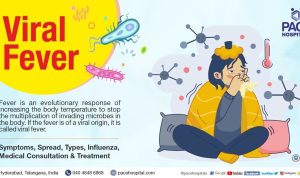Health Insurance Products Going Viral Amid Global Demand signals a transformative shift in the healthcare landscape, where the surge in global health awareness has made these products a hot commodity. As consumers increasingly prioritize their health and financial security, understanding the nuances of this trend becomes essential for both individuals and businesses. This growing demand reflects a broader recognition of the importance of health insurance in safeguarding against unforeseen medical expenses.
The landscape of health insurance is evolving rapidly, influenced by technological advancements and changing consumer preferences. With an emphasis on accessibility and innovation, new products are emerging that cater to diverse needs, making health coverage more attractive and relevant than ever.
In today’s fast-paced world, the significance of effective communication cannot be overstated. Whether in personal relationships, professional settings, or everyday interactions, the way we convey our thoughts and feelings can greatly influence outcomes. This article will delve into the various facets of communication, exploring its types, importance, and tips for improvement.### The Essence of CommunicationCommunication is the act of exchanging information, thoughts, ideas, or feelings between individuals or groups.
It can be verbal, non-verbal, written, or visual. Regardless of the form it takes, effective communication is essential for building and maintaining relationships, resolving conflicts, and fostering collaboration.### Types of Communication
1. Verbal Communication
This is the most common form of communication and involves spoken or written words. Verbal communication can take place in person, over the phone, or via video conferencing. It includes not only the words used but also the tone of voice, pitch, and volume, which can all affect the message’s interpretation.
2. Non-Verbal Communication
Non-verbal cues, such as body language, facial expressions, and gestures, often convey more than words ever could. For instance, a smile can indicate friendliness, while crossed arms may suggest defensiveness or discomfort. Being aware of these signals can enhance understanding in both personal and professional interactions.
3. Written Communication
This includes emails, letters, reports, and any other form of communication that is documented. Written communication is particularly important in professional settings, as it provides a record of conversations and decisions. Clarity and conciseness are fundamental to effective written communication.
4. Visual Communication
Utilizing images, graphs, charts, and other visual aids can significantly enhance the comprehension of information. In an age where attention spans are dwindling, visual communication can be a powerful tool to engage an audience.### Importance of Effective CommunicationEffective communication is vital for several reasons:
Building Relationships
Whether personal or professional, strong relationships are built on clear and open communication. Misunderstandings can lead to conflicts, so fostering an environment that encourages dialogue can strengthen bonds.
Enhancing Collaboration
In team settings, effective communication ensures that everyone is on the same page. It fosters collaboration by allowing team members to share ideas, provide feedback, and work towards common goals.
Facilitating Problem-Solving
Open lines of communication can lead to quicker resolutions of issues. When individuals feel comfortable discussing problems, solutions can be identified and implemented more efficiently.
Promoting Understanding
Effective communication helps bridge gaps in understanding. It allows individuals to express their thoughts and feelings clearly, reducing the likelihood of misinterpretation.### Tips for Improving Communication Skills
1. Active Listening
One of the most critical aspects of effective communication is listening. Active listening involves fully concentrating on what the speaker is saying, understanding their message, and responding thoughtfully. It shows respect and fosters a collaborative atmosphere.
2. Be Clear and Concise
When communicating, especially in written form, clarity is key. Avoid jargon and overly complex sentences. Aim to convey your message in as few words as possible while retaining its meaning.
3. Understand Your Audience
Tailor your communication style to suit your audience. Consider their background, preferences, and level of understanding regarding the topic. This will enhance engagement and comprehension.
4. Practice Empathy
Try to see things from the other person’s perspective. Empathy can enhance connection and understanding, making conversations more meaningful.
5. Seek Feedback
Don’t hesitate to ask for feedback on your communication style. Constructive criticism can provide insights into areas where you can improve.
6. Non-Verbal Awareness
Be mindful of your body language and other non-verbal cues. Ensure that your non-verbal signals align with your verbal messages to avoid confusion.
7. Stay Calm and Composed
In high-stress situations, maintaining composure is crucial. Take deep breaths and think before you speak. This will help you communicate more effectively and avoid escalations.### Overcoming Communication BarriersDespite our best efforts, communication barriers can arise. These may include language differences, cultural misunderstandings, or emotional barriers such as fear or mistrust. Here are some strategies to overcome these obstacles:
Encourage Open Dialogue
Foster an environment where individuals feel safe to express their thoughts and concerns. This can help break down barriers and encourage open communication.
Use Simple Language
When communicating with individuals who may not share the same language proficiency, using simple and straightforward language can help bridge the gap.
Be Culturally Sensitive
Understanding cultural differences can significantly improve communication. What may be acceptable in one culture could be offensive in another, so being aware of these nuances is essential.

Address Emotions
If emotions are running high, take a step back before continuing the conversation. Acknowledge feelings and allow individuals to express themselves before moving on.### The Impact of Technology on CommunicationIn recent years, technology has transformed the way we communicate. From emails to instant messaging and video conferencing, technology has made communication more accessible. However, it has also introduced new challenges:
Misinterpretation
With the absence of non-verbal cues in written communication, messages can be easily misinterpreted. Emoticons and clear language can help convey tone, but it’s essential to be cautious.
Information Overload
The ease of communication can lead to information overload. With constant notifications and messages, it can be overwhelming to keep up. Setting boundaries and managing notifications can help mitigate this issue.
Reduced Face-to-Face Interaction
While technology connects us in many ways, it can also lead to a decline in face-to-face interactions. Prioritizing in-person conversations when possible can help maintain personal connections.### ConclusionEffective communication is a vital skill that can significantly enhance both personal and professional relationships. By understanding the different types of communication, recognizing its importance, and actively working to improve our skills, we can foster more meaningful connections and navigate challenges more effectively.
As we continue to adapt to the evolving landscape of communication, let’s prioritize clarity, empathy, and understanding in all our interactions. By embracing these principles, we can enhance our communication effectiveness, build stronger relationships, and ultimately lead more successful and fulfilling lives.
Top FAQs: Health Insurance Products Going Viral Amid Global Demand
What are the main types of health insurance products currently trending?
The main types include individual health plans, family floater plans, critical illness insurance, and short-term health insurance, each catering to different needs and demographics.
How has technology influenced health insurance products?
Technology has streamlined the application process, enhanced customer service through telemedicine, and enabled personalized health plans based on data analytics.
Why is there a growing global demand for health insurance?
The demand is driven by increased health awareness, rising medical costs, and a growing recognition of the importance of financial protection against health-related expenses.
What challenges do consumers face when choosing health insurance?
Consumers often encounter challenges such as understanding complex policy details, navigating coverage options, and assessing the affordability of premiums.
What strategies can help individuals select the right health insurance plan?
Individuals should assess their health needs, compare different plans, consult with insurance advisors, and read reviews to make informed decisions.













